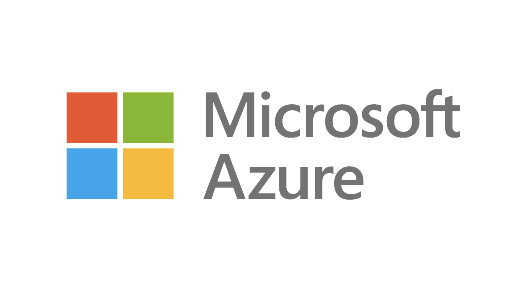Insights
August 2021
Peer-to-Peer Repo Market Trends
P2P repo can offer access to competitive financing costs across a range of collateral types and also opportunities for improved yield. Travis Keltner and Leslie Womack of our Funding and Collateral Solutions team examine the trends and innovation that are driving scale and flexibility for buy-side investors in the repo markets.
Time for the repo market to unlock the benefits of P2P
Advancing P2P markets in repo is expected to benefit buy-side market participants by providing new liquidity pools and improving trade economics.
The repo market is one of the world’s largest, surpassing US$4 trillion in the United States and estimated at over US$13 trillion globally.1
Avariety of asset managers and owners of high-grade bonds such as Treasuries may access short-term liquidity. On the other side of the trade, another set of overlapping or exclusive asset managers and owners can earn a return with minimal risk. These lenders and borrowers typically face dealers and banks. Increasingly, these parties are seeking a scalable P2P model.
Increasing buy-side access beyond the dealers that traditionally facilitate repo trades is expected to create a range of benefits, such as increased opportunities for yield and more competitive financing options. P2P models may also expand buy-side participants’ access to liquidity across a broader set of asset classes and enhance the overall stability of their financing by serving as a buffer from fluctuations in the wider market.
Despite its size, however, the repo market has suffered liquidity issues. In September 2019, an acute liquidity shortage in the repo market left banks short of financing. The Federal Reserve had to step in as a buyer of US$75 billion of overnight repo.2 Just six months later, in February and March 2020, as the COVID-19 pandemic caused severe market turbulence, banks and dealers hit capacity constraints that left trading firms and investors struggling to access liquidity. Although government intervention has increased the repo market’s size, however, cash is still outpacing repo investment opportunities. As of August of this year, the Fed’s Reverse Repo Program is absorbing over US$1 trillion of uninvested cash.3
Against this background, it is important to look closely at the role of dealers to understand why they are set to remain an important part of the funding ecosystem, but perhaps not the only option.
The role of dealers
Banks, brokers and dealers have been central to the funding model of buy-side institutional investors since the earliest days of modern banking. Dealers provide access to liquidity through their scaled balance sheets, but the cost of providing that liquidity is impacted by internal risk measurements as well as regulatory limitations.
Banks and dealers live and breathe balance sheet constraints, whether it be the cost to hold capital against leverage, risk-based capital requirements, liquidity needs from day-to-day funding obligations, contingent risks, or intraday exposures. Evolving constraints drive costs that are passed to clients via financing and cash investment repo products.
Traditional dealer repo or lending as we know it today includes a premium (i.e., a spread or fee) passed to clients, to ensure capital returns exceed certain targets. Sophisticated dealers will optimize their balance sheet to marginally lower the premium, but it remains a material cost. Market trends and volatility heavily influence their approach. For example, while liquidity and capacity are at decade-level highs currently, we know this can swing quickly, as it did when repo rates nearly hit 10 percent in 2019 or during the onset of COVID-19 as dealers took wider spreads to finance.
Using advanced systems and data aggregators, dealers typically weigh each client’s business footprint across the firm to guide their allocation of balance sheet. This tend to favor relatively larger and engrained clients, and mid-to smaller-sized players on the buy side may be limited from accessing dealer financing and investment products. As these latter clients may not have the operational means to execute and settle collateralized trades bilaterally, their options to close the gap are also limited.
The evolving repo trading market
By helping a large number of buy-side participants improve their access to liquidity, investment opportunity and ultimate trade economics, an evolved P2P repo trading market may positively influence overall market liquidity in concert with traditional financing models.
The Fixed Income Clearing Corporation’s (FICC) sponsored repo offering, in which a sponsoring clearing member may novate buy-side transactions to FICC arguably has provided a bridge to pure P2P markets. This is due to balance sheet netting benefits for novated trades, which has effectively expanded clearing members’ balance sheet availability for higher volumes of transactions with buyside participants.
This increased capacity has broadened access and generally lowered costs and improved returns versus traditional repo. This is particularly notable at key dates such as quarter-end or in liquidity crunches, when premiums historically have been elevated. We believe these benefits will accelerate and multiply as P2P repo trading matures.
P2P business models have proliferated in recent years, from Airbnb to car-sharing, but there are good reasons why P2P has not yet scaled in repo markets. Most successful P2P business models require a transaction facilitator or common platform to exchange information. Repo transactions require legal documentation, trade settlement, sophisticated collateral management and more. Previous attempts by various entities to support P2P repo in scale have not addressed the full suite of needs.
So the question is: given the many advantages of a P2P business model for the repo market, which type of organization has the scale and skill to make it happen? The answer, we think, is a global custodian.
We’ll dive into our reasoning in our next article in this series.
Travis Keltner
Managing Director
Funding and Collateral Solutions
Leslie Womack
Managing Director
Funding and Collateral Solutions
Related Insights



